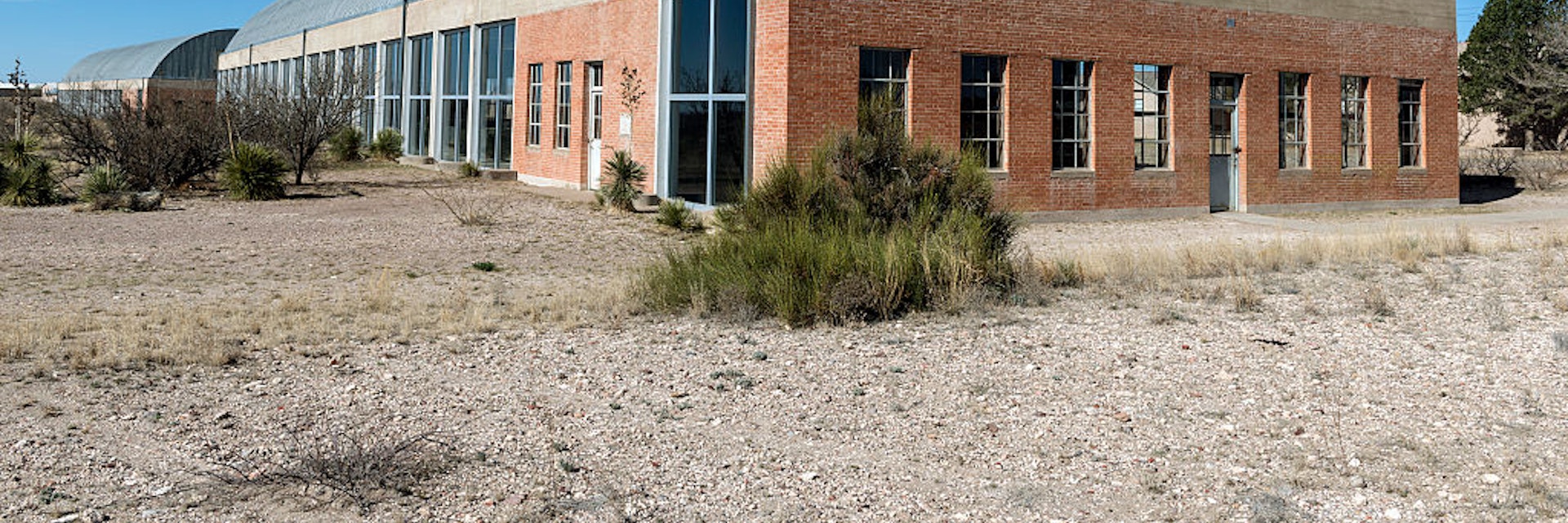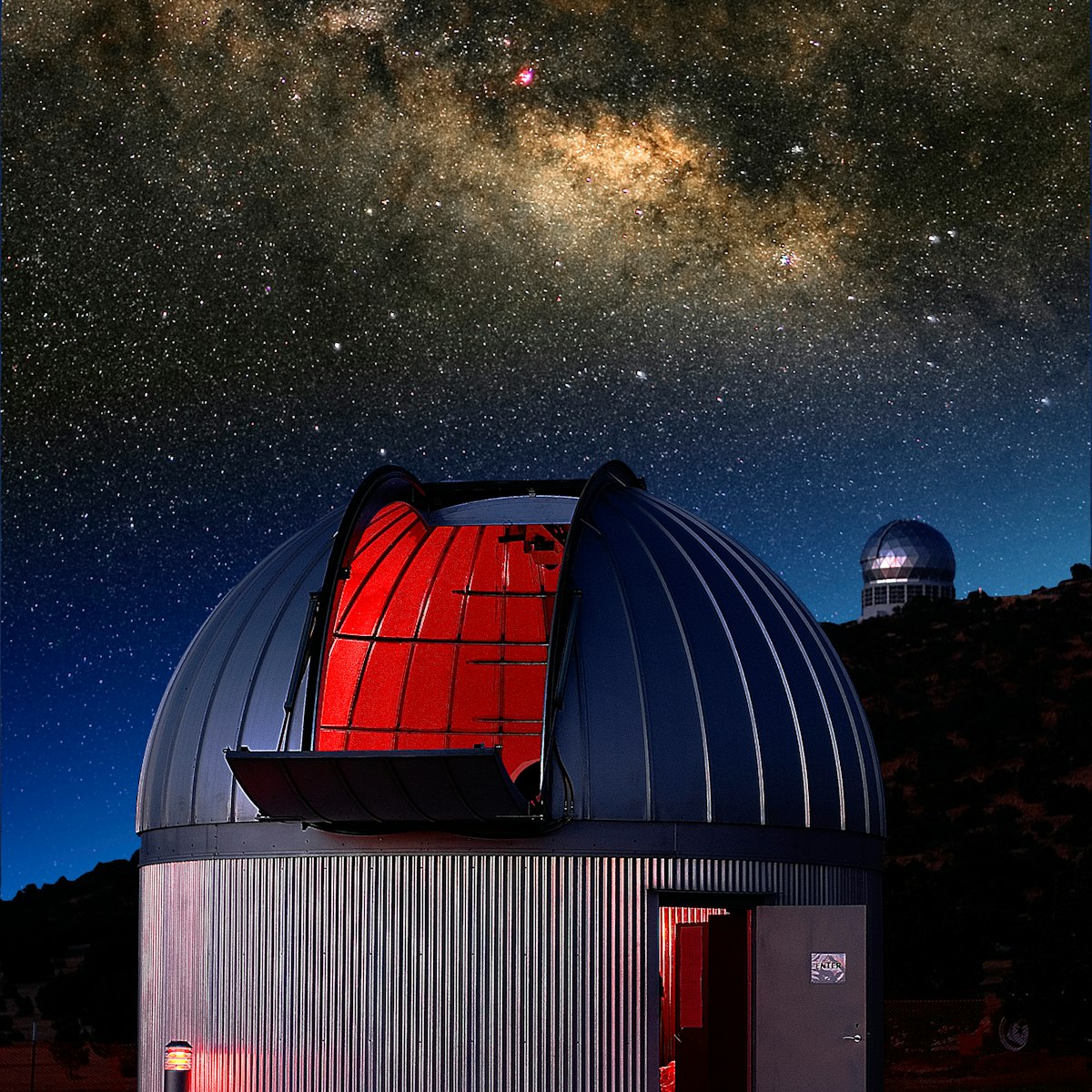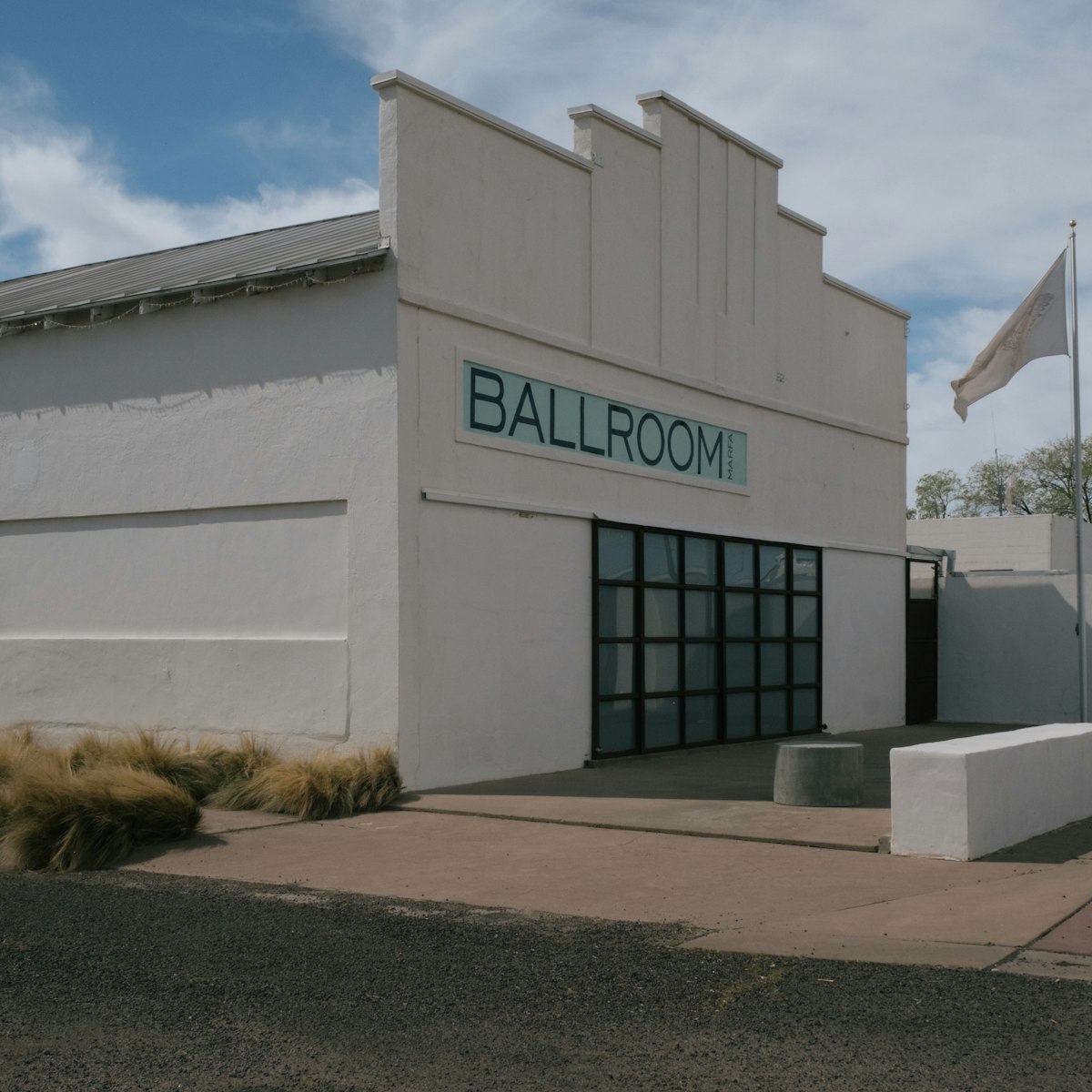As you step inside the historic artillery shed, with its enormous windows, sweeping desert views and sun-dappled aluminum boxes, the Marfa hoopla suddenly makes sense. Artist Donald Judd single-handedly put Marfa on the art-world map when he created this museum on the site of a former army post. The grounds and abandoned buildings now house one of the world’s largest permanent installations of minimalist art.
The whole place is an immersive, breathtaking blend of art, architecture and landscape. The best way to immerse yourself in Judd’s work is on a guided tour. Tours are currently offered at 9am and 10am on Thursday, Friday and Saturday, and they last 90 minutes. Tours stop at the artillery sheds, which hold Judd’s 100 untitled works of aluminum. The guided tour also visits his 16 untitled works in plywood and the Arena. Visitors can explore Judd’s 15 untitled works in concrete on their own after the tour. Specialty tours and full collection tours include the works of other artists.
If you don't have time for the guided tour, at least check out his works in concrete on the 1.6-mile self-guided tour. The vast grasslands and open spaces that backdrop the hollow concrete boxes are integral components of the piece and the scene is mesmerizingly beautiful. The self-guided tour also swings by Claes Oldenburg and Coosje van Brueggen’s Monument to the Last Horse. Guided tours are $25 and self-guided tours are $15.
The separately run Judd Foundation maintains and preserves the living and working spaces of Donald Judd in downtown Marfa. A guided tour of his studios and library is available ($25).
Donald Judd
Known for his stark and vivid minimalist installations, Donald Judd was also an architect, furniture designer, essay writer, art collector, art critic and passionate advocate for art and expression. After a stint as an engineer for the US Army in Korea in the mid-1940s, Missouri-born Judd moved to New York City, where he studied art history and philosophy at Columbia University and painting at the Art Students League. He was a painter as well as a prolific art critic in his early twenties.
Three-dimensional artwork became his focus, and he worked from his home and studio at a five-story building he purchased at 101 Spring Street in Manhattan. Judd began buying studios, residences and ranches in Marfa in 1973. He eventually dropped out of the New York art scene as he turned his focus to his holdings in West Texas. Here he began creating and installing permanent works of art, with an embrace of open space as his canvas and industrial materials as his preferred artistic medium.
In 1979 he purchased a 400-acre former army base and its 32 abandoned buildings on the outskirts of Marfa. It would soon become the home base for the Chinati Foundation, which he established in 1986 for the purpose of permanently displaying his site-specific works and those of an international array of artists. The foundation is named for the Chinati Mountains southwest of Marfa. A passionate if often cantankerous advocate for the arts, Judd was also a visionary. His dreams of displaying art in a space-appropriate setting, where it could be appreciated for its own sake, have been realized in Marfa. He died at age 64 in 1995.
Permanent Collection
The centerpiece of the Judd collection is 100 untitled works in mill aluminum. For this creation, Judd adapted two artillery sheds, replacing garage doors with squared and quartered windows and adding a vaulted roof, which doubled the height of the building. The sculptures are spread across both sheds and arranged in rows of three. And though all of the sculptures have the same dimensions, each one has a unique interior shape. Natural light fills the sheds through the prominent windows, which also frame the vast desert grasslands that unfurl toward the horizon.
His 15 untitled works of concrete were cast and installed between 1980 and 1984. Visitors literally step into the “canvas” as they wander past the concrete boxes on the high desert plain. The Judd-restored Arena – which served as a fort gymnasium and later as a horse arena – is another highlight. It is notable for its stripped-down appearance, with long, alternating bands of concrete and gravel filling the floor space and marking the piece.
Other permanent works? A fluorescent light installation by Dan Flavin, a replica of an abandoned Soviet Union schoolhouse by Ilya Kabakov, and an untitled work by Robert Irwin encompassing an entire abandoned military hospital. These installations are not currently included on any guided tours but may be included in future specialty or full collection tours. Claes Oldenburg and Coosje van Bruggen created another outdoor piece, Monument to the Last Horse, which sits near the 15 untitled works of concrete. The horseshoe-shaped sculpture gives a nod to an older monument that marked the grave of Louie, the last surviving cavalry horse at the fort. Like the original marker, the sculpture is inscribed Animo et Fide – Spirited and Faithful.
Plan your visit
Reservations are currently required for guided tours and self-guided tours – be aware that only a handful of Judd’s indoor exhibits are currently seen during guided tours. The museum is located in the high desert, so sunlight can be powerful during the day. Dress appropriately and wear comfortable and sturdy closed-toe shoes. The museum is in the Central Time Zone. El Paso is in the Mountain Time Zone, so there is an hour difference to consider if you are driving from El Paso.
Things to do in Marfa
A high plains cattle town with an artsy side, Marfa is an appealing basecamp for exploring West Texas. And the mysterious Marfa Lights, which occasionally twinkle on the distant horizon, keep the vibe quirky. Look for the lights at the Marfa Mystery Lights viewing area about 9 miles east of town on Hwy 90/67. Overnight visitors can sleep in a vintage trailer, a yurt or a tipi at free-spirited El Cosmico Campground. Don't miss the Marfalafel at Food Shark, a food truck serving Mediterranean fare, and the burritos at Marfa Burrito. Be aware that restaurant hours are fickle and many popular spots are closed early in the week.





